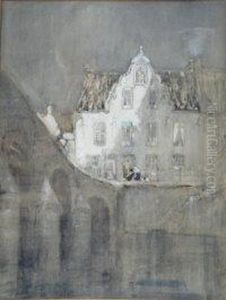Annie St. John Partridge Paintings
Annie St. John Partridge was a British artist known for her work as a sculptor during the late 19th and early 20th centuries. Born in 1865, she emerged as a talented artist in a period when it was challenging for women to gain recognition in the field of fine arts, which was dominated by male artists and sculptors.
Annie St. John Partridge studied at the National Art Training School in South Kensington, which later became the Royal College of Art. She trained under the tutelage of the French sculptor Aimé-Jules Dalou, who was living in exile in England at the time. Dalou's influence is evident in Partridge's work, which features a strong sense of realism and attention to detail. Her education and training allowed her to develop a solid foundation in the techniques of sculpture, and she eventually became known for her portrait busts and statues.
Despite the challenges faced by women in the arts, Partridge managed to carve out a successful career. She exhibited her work at the Royal Academy of Arts and was involved with the Society of Women Artists, where she served as Vice-President. Her works received acclaim and were appreciated for their lifelike quality and expressive nature.
Partridge's contribution to art extends beyond her own creations. She was also an educator, teaching sculpture at the London County Council School of Arts and Crafts. Through her teaching, she influenced a new generation of artists and promoted the role of women in the arts.
Annie St. John Partridge's influence was recognized during her lifetime, and her legacy continued after her death in 1934. Her artworks are a testament to her skill and determination in a time when female artists fought for recognition and equality in the art world.

